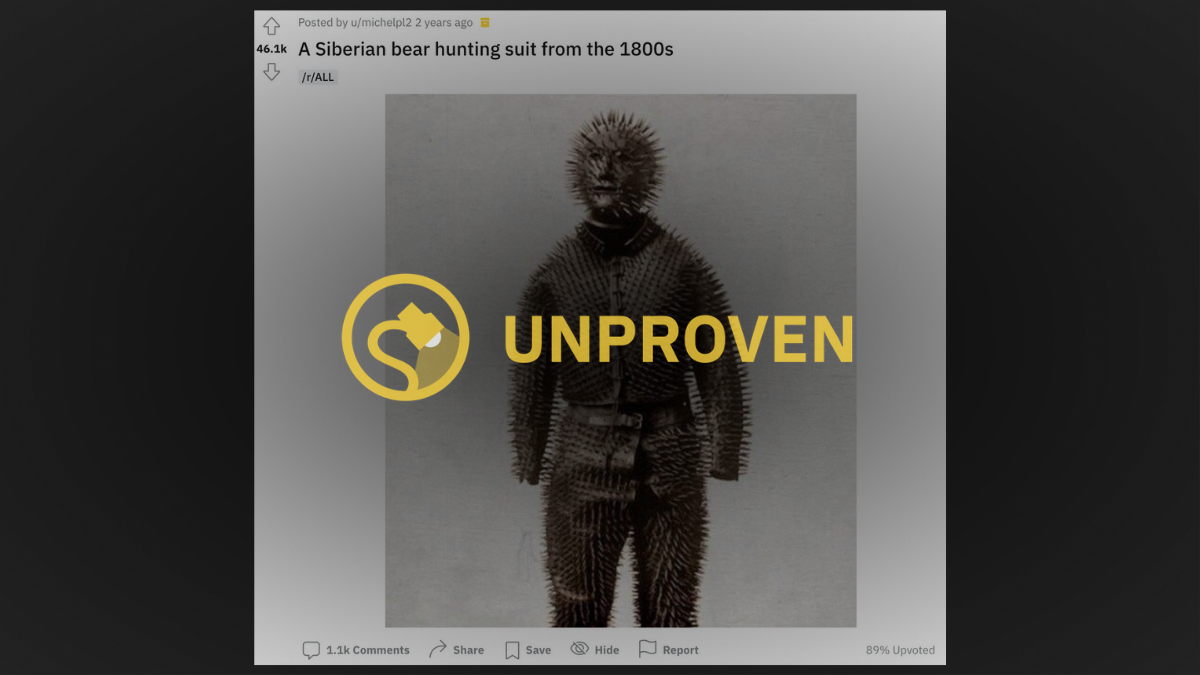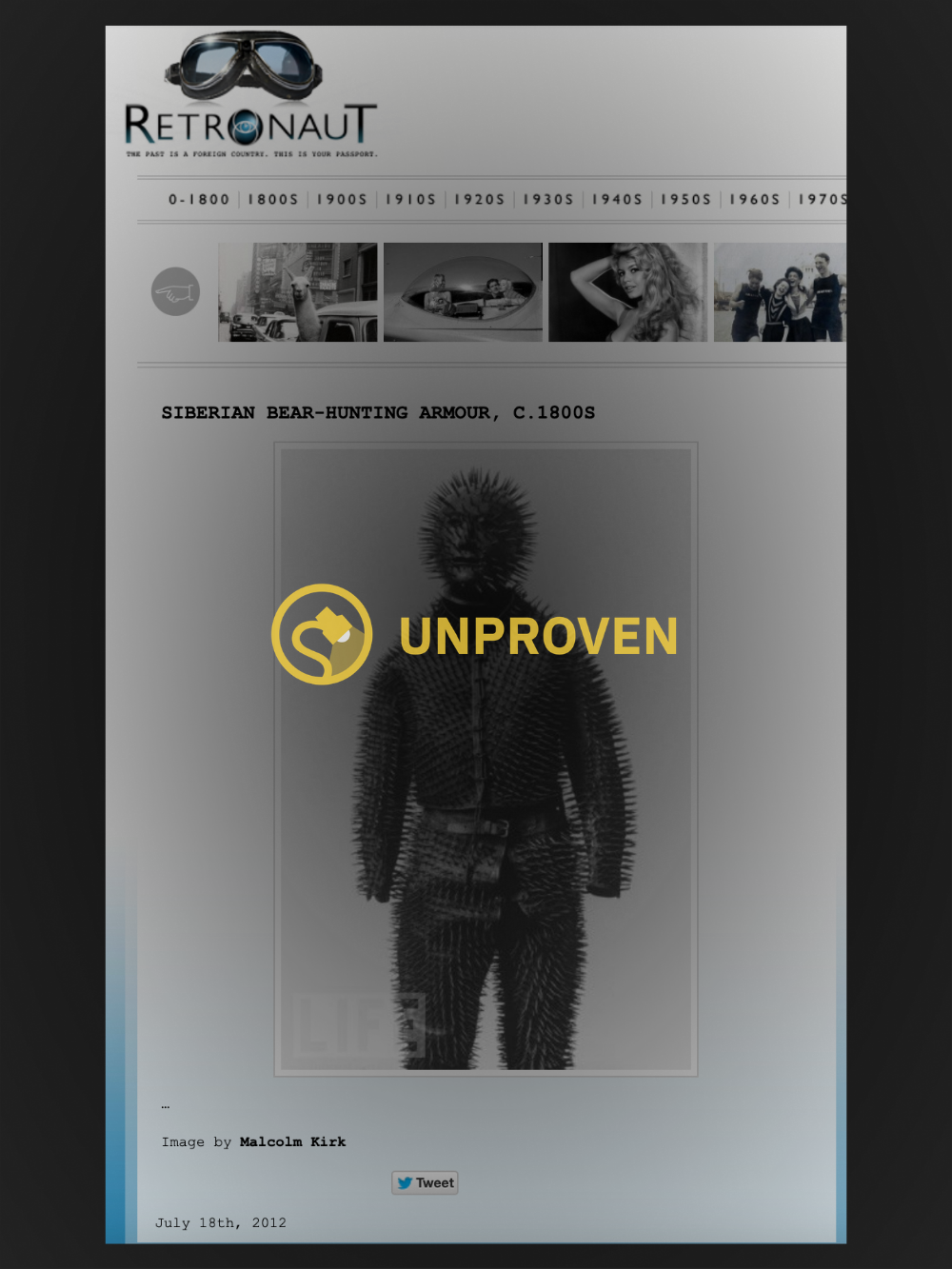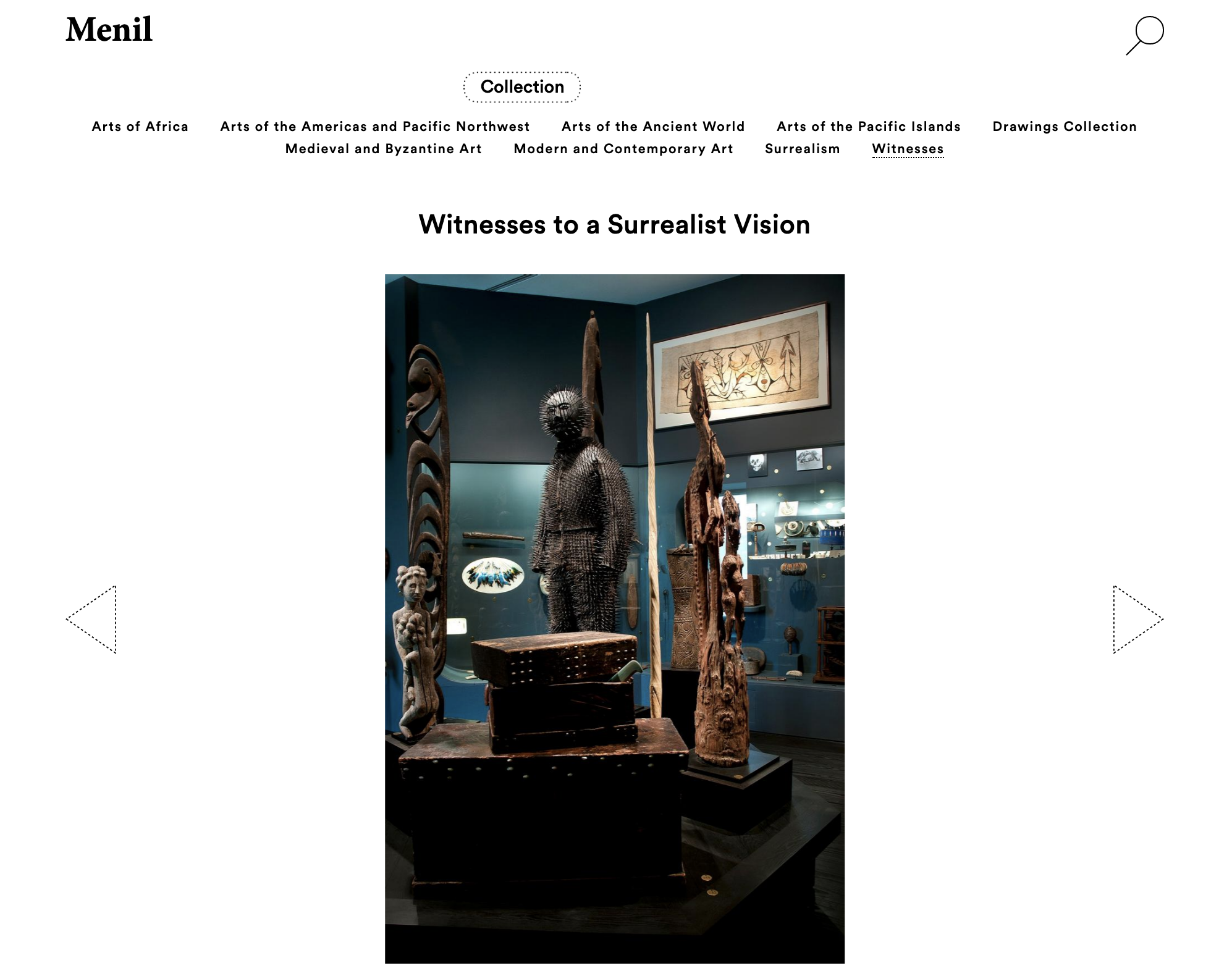In recent years, internet users and fans of historical curiosities have marveled at a bizarre, even sinister-looking costume covered head to toe in spikes, which is most commonly described as being a "Siberian bear-hunting suit from the 1800s."
Enthusiasts have repeatedly posted largely the same, distinctive black-and-white photograph of the outfit, to the popular online forum Reddit: in 2019; 2018; and 2014. The posts always refer to the object as a "Siberian bear-hunting suit" and largely date it to the 19th century, as shown in the example below:
The remarkable photograph, and its description as a Siberian bear-hunting suit from the 19th century, enjoyed a boost online in 2012, after it was featured on the popular, and now defunct, website Retronaut:
It has even inspired a song, entitled "Bear Hunting Armor," which was released by the Prague-based indie band Ending, in 2018. The music video, whose imagery clearly borrows heavily from the now-famous photograph, can be watched below. The band itself described the song as having been "Inspired by a Siberian bear hunting armor from the 1800s."
In reality, conclusive evidence is not available as to the precise origins of the costume — its purpose, creation date, or the geographical and cultural milieu from which it emerged — although it is a real historical artifact and the widely shared photograph of it is authentic.
Moreover, good reasons exist to doubt the accuracy of the "Siberian bear-hunting" explanation that has become popular. As such, we are issuing a rating of "Unproven." If decisive evidence emerges, we will update this fact check accordingly.
The picture in question appears to have been taken by Malcolm Kirk, a renowned New York-based photographer. In 2012, the Victorian Adventure Enthusiast blog wrote about the artifact, claiming to have confirmed with Kirk's representatives that he did indeed take the photograph.
As of July 2021, the suit itself was housed at the Menil Collection in Houston, Texas — a museum that contains the private art and artifact collection of the French-American de Menil family. The museum's website features various photographs of the costume, which is on display as part of the "Witnesses to a Surrealist Vision" exhibit:
The Menil Collection describes the exhibit, which first opened in 1999, as follows:
This unique installation presents a culturally heterogeneous collection of more than 150 objects from the Menil’s permanent collection or on long-term loan from members of the de Menil family. Ritual and everyday objects, primarily from the indigenous peoples of the Pacific Islands and the Americas—which the Surrealists believed to be “witnesses” to the universality of their own visual and literary artistic practices—are exhibited with 19th-century European astrolabes, anamorphoscopes, and other devices that offer alternative ways to perceive and understand reality.
So we know the suit is real, who owns it, and where it has been on display for the past 20 years, and we know that the widely shared photograph of it is authentic, as well as the name of the photographer who captured it. However, the precise origins of the costume remain elusive.
In her 2014 master's thesis, available in full here, Kristen Strange at Arizona State University wrote at length, and in considerable detail, about "Witnesses to a Surrealist Vision."
As part of her research, she examined records relating to the acquisition of the costume, which was also frequently referred to as "Wildman," as well as correspondence involving Dominique de Menil, a co-founder of the museum along with her husband, John; their daughter, Adelaide de Menil; and Edmund Carpenter, Adelaide's husband and an American anthropologist who initially curated the exhibit.
Despite her extensive examination of those documents and records, Strange found no evidence to definitively pin down the exact origins of the suit, but did discover some interesting background information, and clues that the outfit might actually have originated in 18th or 19th century Germany or Switzerland, rather than 19th century Russia. She wrote:
The Wildman, an essential object in the early planning stages of the exhibition, was referred to as the “porcupine man” in correspondence between Dominique de Menil and Edmund Carpenter.
... Carpenter was likely drawn to the uncanny appearance and narrative of the Wildman, and displayed this costume in his office for many years before its inclusion in “Witnesses.” There has been some uncertainty over this object’s culture of origin and its originally intended purpose. While it is now thought to have originated in eighteenth- or nineteenth-century Germany or Switzerland, this costume presumably represents a folk figure seen in the Vogel Gryff Festival in Basel, but it has also been considered a bear hunting costume.
... Its provenance dates backwards from a December 6, 1974 auction at the Palais Galliera [in Paris], where it was purchased by Adelaide de Menil and Carpenter. The file provides further documentation and explains that this costume came with a handwritten note stating that it formerly belonged to the collection of “Adamson (naturalists) who gave their name to surreal seashells.”
While the true origins of The Wildman remain uncertain, it appears that it was being described as a bear-hunting suit as early as 1998, and possibly before that. In November of that year, the renowned conservator Barbara Appelbaum wrote an email to her colleagues at the Global Conservation Forum, looking for advice on the use of Beva, a specialist adhesive popular among conservators.
In her email, she described the artifact she was working on at that time in terms that strongly suggest it was The Wildman, especially since her email came just months before the "Witnesses to a Surrealist Vision" exhibit first opened at the Menil Collection. However, it should be noted that in her email, Appelbaum cast doubt on the "bear-hunting" description of the item:
The object is being called a Siberian bear-hunting suit, but I suspect it is more likely to be for bear bating than hunting, since I can't imagine anyone could run around the woods in it. It consists of leather pants and jacket (and an iron helmet) studded all over with 1-inch iron nails about 3/4 in. apart. The nails are held in place by a second layer of leather lining the whole thing and quilted into place between the nails. In areas of wear and flexing, like around the ankles and the crotch, the inside layer of leather is worn through, so the nails are falling out.




